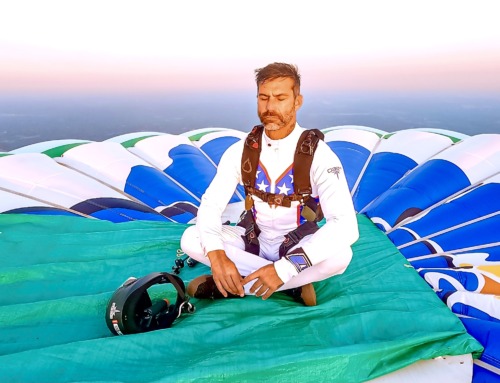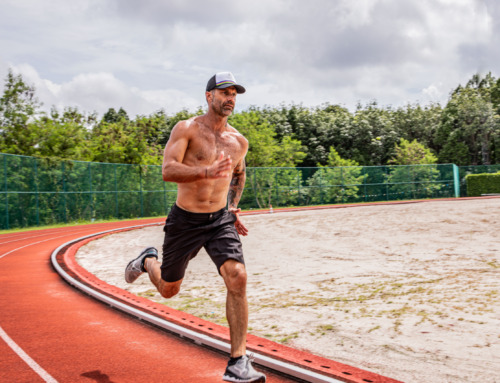By Damien Rider
The guiding principle for Self-Connection is your connection to the breath. You may have had your therapist, yoga teacher or breath work gurus tell you how to breathe, and maybe all of them tell you the same words and demonstrate the same action, but just by being told how to breathe is only scratching the surface of the breath connection. Most of the time they are sharing words and actions to be used as another vice or quick fix go-to, without really changing the autonomic nervous system, which actually regulates your breathing patterns. During this lesson, we’re going to learn about what connecting to the breath means, how conscious and intentional breathing can benefit the mind and body and explore some simple ways you can begin practicing your mind-body-breath connection today.
These teachings and strategies have been successful with my clients from all walks of life, as they have been practiced globally. You can practice these anywhere, and soon you’ll see how breathing can help you accept, adapt, and move forward in all situations of life.
One Breath Meditation Example:
› Now take up a comfortable position sitting down with your back straight and head comfortably looking forward.
› Allow your arms and hands to sit in their natural position in front of you.
1 minute / 9 breaths.
Closing your eyes.
› Begin to breathe calmly with nothing forced.
› When you breathe in, your breath draws in through your nose and all the way down until your belly inflates, then allow it to flow unforced through your mouth.
› Your chest or shoulders shouldn’t be rising and only with minimal movement.
› Breathe in through your nose all the way down inflating your belly, then it turns around and flows unforced through your mouth.
› Breathe in through your nose all the way down inflating your belly, allow the air to flow all the way out, through your mouth.
› Think about the air as it travels through your nose, all the way down, it turns around and is gently released through the soft mouth as your belly deflates.
What Does It Mean to Connect to Your Breath?
According to the United States Environmental Protection Agency, the average person takes anywhere from 17,230 to 23,040 breaths every single day. That’s thousands of inhales and thousands of exhales…. An incredible number of times to perform any activity.
As you read this chapter, you probably just became aware of your breathing, and yet you were already doing it without having to think about it. So what does it mean to connect to the breath, and better yet, why should we even worry about that if it’s something that happens automatically for us?
Connecting to your breath is the action of choosing to become aware of your breathing, feeling the sensations in your body as you inhale and exhale, and controlling the pace of your inhales and exhales. When you’re breathing automatically and without connection, your breath is shallow and short. As you connect to your breath, your breathing becomes expansive and deep.
As you practice connected and controlled breathing, any physical symptoms of “fight, flight or freeze mode” (which we’ll learn more about later in Understanding Stress), such as fast, shallow breathing, a racing heartbeat, trembling limbs, sweaty palms, and dilated pupils, begin to calm down and regulate. Your body will begin restorative responses, such as a regulated heart rate, even breathing, normal digestion, and less tension in the body.
Even if you don’t think you’re particularly stressed or anxious when you practice connecting to your breath, you will begin to notice where you were carrying some tightness in your body, and it will only benefit you and help you feel better– there is nothing to lose by using this technique.
Today you’ll begin to practice the action of connecting to your breath with a few tried and true tips to help you in your journey.
“Every breath that leaves your body is a sign of the life within you… A sign that somehow, there is a rhythm to it all, amidst all that you are going through.”
– Morgan Harper Nichols
The Life-Changing Benefits of the Mind-Body-Breath Connection
For thousands of years, yogis and yoginis have practiced what is called pranayama, which means “breathwork” in Sanskrit. In yoga, your breath is thought of as your “life force.” It’s not simply a fleeting action, but something that fuels your very existence and being in a deeply profound way.
In 2017, a group of scientists at Stanford conducted a study that revealed what yogis already knew to be true: your breath can influence your state of mind. That’s right, only 4 years prior to this book being written have some of the “world’s leading minds” again shown that their research and knowledge, is years behind what people already know to be true and effective in overcoming past trauma and increase positive mental health.
This Stanford study found there is a small group of neurons in the brain that communicate directly between your respiratory center and how relaxed, focused, excited, or anxious you are. Their findings indicate that the way you breathe affects your mental state.
Conscious and intentional breathwork can create a shift from being anxious, tense, or distracted to feeling calm, focused, and pleasant.
Imagine the possibilities your life would have if you could choose to transform your mood and mindset in this way…
If the next time you had a difficult conversation with a family member or friend you felt calm instead of on edge, what would that do for you?
If the next time you made a presentation for work or public speaking you felt focused instead of nervous energy, what would that mean for your performance and your job prospects?
If the next time an unpleasant memory or comment got under your skin and you were able to tap into a sense of security and
relaxation instead, how would that change your attitude that day?
Athletes like Lebron James, Michael Jordan, Derek Jeter, Russel Wilson, Carli Lloyd, and Biance Andreescu all perform active meditation, some of these legends practice active meditation consciously while others do it intuitively to perform at their best. There are also many extremely successful CEOs and Executives who use a form of meditation and breathwork, such as Jeff Weiner of LinkedIn, Mark Benioff of Salesforce, Russell Simmons, and more.
By connecting to your breath, you can create transformational results—anytime and anywhere. It requires no special equipment, no need to be guided by gurus or their mystical abilities, only your willingness to commit, practice, unlearn what you’ve been told and trust your open and intuitive awareness.
Practicing the Mind-Body-Breath Connection
Begin connecting to your breath by first simply turning your awareness towards it. Close your eyes, and simply breathe as normal and acknowledge that you’re breathing. Without trying to change anything, notice that you are breathing and how that feels.
Ask yourself these questions: Where in my body do I notice my breath? How is my mood right now? How is my energy? Do I feel any stress or tightness in my body or mind?
You may feel your breath most in the cool sensation of air through your nostrils as you inhale, in the rise and fall of you shoulders, or in your lungs and chest as you inhale and exhale. Notice if you sigh and how it feels when you do.
After about 30-60 seconds, begin to deepen your breath. Place one hand over your abdominal area and as you inhale through your nose, feel your belly expand like a balloon filling up with air. As you exhale out of your mouth, allow the belly to float back down. If possible, find a position lying on your back, which can make this breathing easier. By lying down, you’re using your full diaphragm, deep in your core, to take full breaths.
With each breath, allow the belly to move and begin to slow your inhales and exhales. See if you can count to three for each inhale and exhale, hold for two counts, and exhale to the count of four. As you continue, add just 1-2 more counts to your next few inhales and exhales, gradually taking longer and deeper breaths.
One Breath Meditation Example: 1 breath.
› This time on the breath in, count how may beats it takes to draw in the air to expand your belly
›hold for one beat and slowly, with control count as the air is released out through your mouth.
1 breath.
› Again, draw your breath in all the way down, extend it by two more beats on the inhale, inflate your belly
›hold for two beats and slowly release through a soft mouth extending the exhale by two more beats.
1 breath.
› Again, draw your breath in all the way down, extend it by two more beats on the inhale, inflate your belly
›hold for two beats and slowly release through a soft mouth extending the exhale by two more beats.
If you begin to notice tension or feel anxious, try to view this without self-judgment. Our egos like to criticize us when we’re not in constant action, but the time you’re taking to invest in your mental health and practice is extremely important. Remind yourself that if high-performing CEOs and athletes are encouraged to control their breath connection to increase productivity and performance, so are you.
After several minutes, you may begin to feel a sense of ease and relaxation. You might also feel a burst of energy from the oxygen waking up and fueling your body. If you don’t feel this right away though, don’t worry, it will come with time and practice.
Your commitment to notice your breath and honor your body and mind shows that you’re motivated to change your life, open your connective awareness, and to optimize your life and the lives around you. It demonstrates an open mind, attention to detail, and the ability to first lead yourself.






